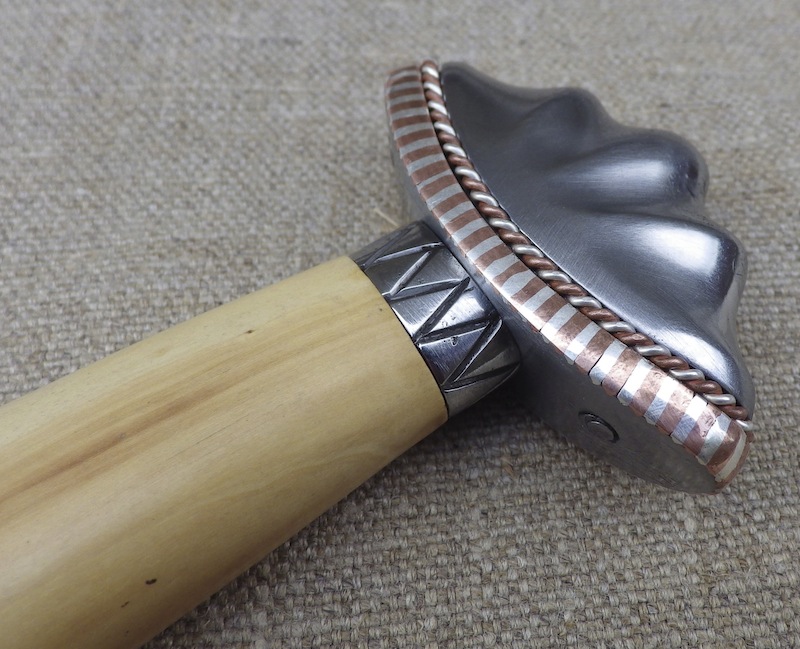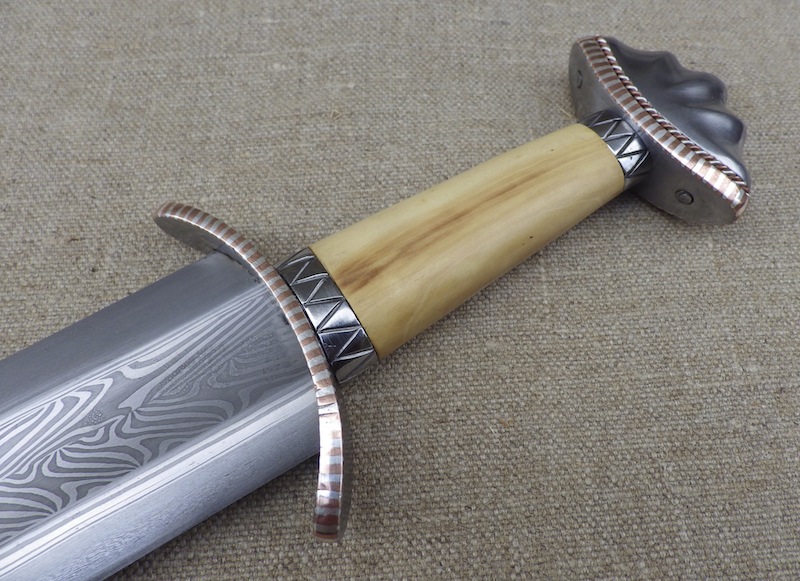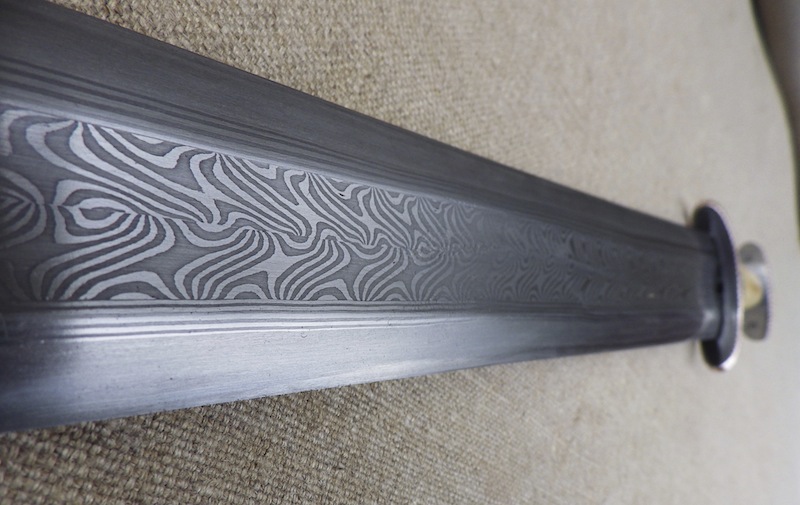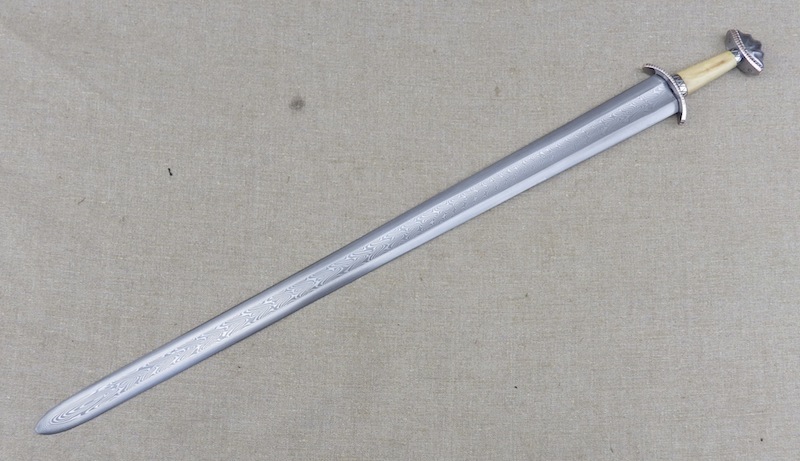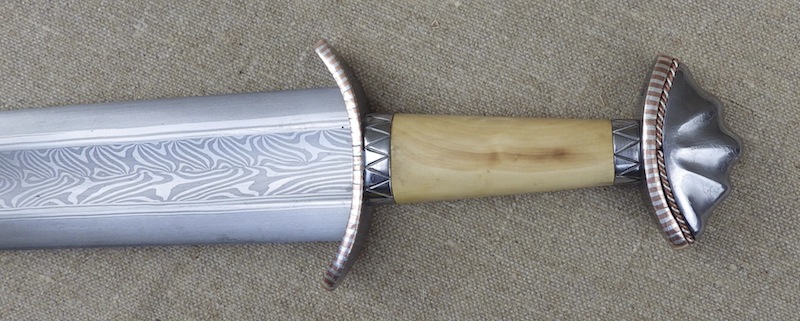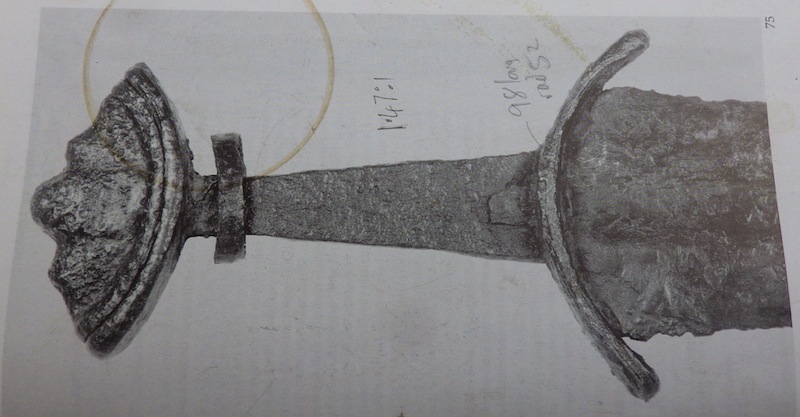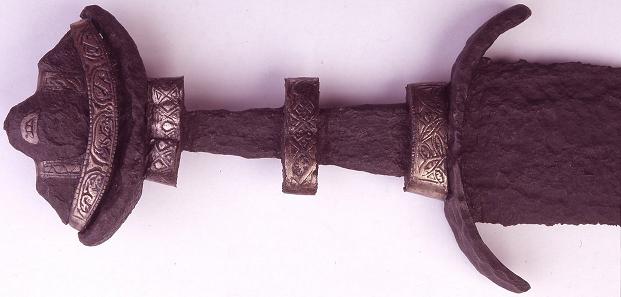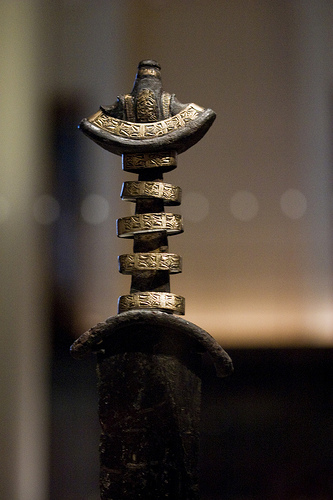Swords, of this period were single handed with relatively small pommels by later European standards and usually had pattern welded blades and two piece pommels. By the 10thC pattern welding of blades had become less common, though it lived on longer in smaller blades into the 12thC.
The hilt has a polished box wood hilt, with steel top and bottom guards which have been inlaid with alternating copper and silver wires. These swords have the top guard riveted to the tang and once this has been set, the pommel is riveted to the top guard. All up weight is 2.2lbs / 1010g, blade length is 31.5"/ 80cm
I hope you like the result.
Hilt work by Tod/todsstuff, blade work by Owen Bush.
I have asked Owen to chip in with commentary on the blade.

